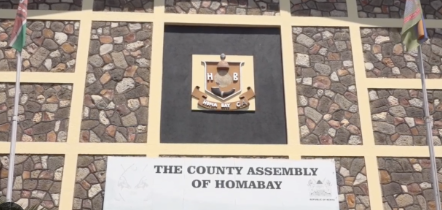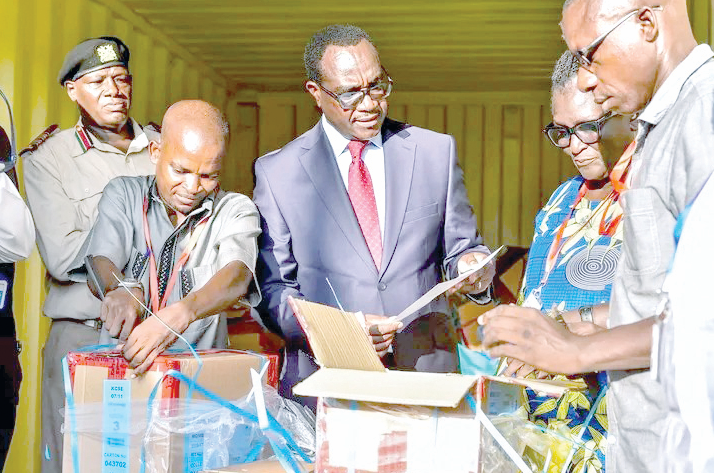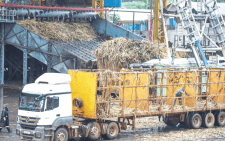Farmers ditch maize farming for passion fruit

A 33-year-old Edwin Kipkoech Rono ditched maize farming in 2018 after prices of the crop plummeted by 40 per cent, yet the cost of production sky-rocketed.
At the time, a new wave was sweeping his Sirikwa village in Nakuru where farmers were embracing passion fruit farming on the realization that it was a more profitable venture than maize.
They had by now learnt that passion fruit venture required a small acreage, its inputs were relatively affordable and were less demanding with quick and significant returns.
Rono kicked off the venture by planting passion fruit seedlings on three acres at his farm before gradually expanding the acreage the crop covered.
“I have put 14 acres of my shamba under the passion fruit crop. After every three months it gives me more than thrice of what I used to get from 40-acre planted with maize in one year,” Rono says.
He says the crops take nine to 10 months from planting time to maturity and harvesting can last between three to four weeks.
“Given good weather conditions, I can harvest between 1,200 and 1,500 kilograms per season. When sold between Sh100 and 110 a kilo, this yield fetches me between Shs120,000 and Shs 165,000,” says Rono.
He indicates that though the global demand for the fruit by consumers and processors was growing, Kenya’s production was dwindling due to the unavailability of high-quality planting material and widespread traditional propagation of seedlings that favours disease build-up.
Rono is excited that the European Union (EU) funded Market Access Upgrade Programme (MARKUP) has embarked on promoting new farming technologies for breeding multiple disease-free and high yielding passion fruit planting materials in a bid to enhance quality and safety standards for the export market.
“We are upbeat that the MARKUP project is also exploring ways of linking smallholder passion fruit farmers to exporters of horticultural crops to the European, Middle East and Asian markets. This will only be possible if farmers have access to clean and quality planting materials,” adds Rono.
The Sh 473.9 million MARKUP which is anchored within the Ministry of Industry, Trade and Cooperatives also aims at improving the competitiveness of small-scale farmers within the targeted 12 counties in a variety of crop value chains, including mango, passion fruit, avocado, tea, coffee, horticulture, herbs and spices, tea and nuts.
The counties are Nakuru, Bungoma, Busia, Homa Bay, Siaya, Trans Nzoia, Uasin Gishu, Taita Taveta, Kwale, Makueni, Machakos and Kajiado.
Rono adds, “Processors from Uganda are the biggest source of market for passion farmers here at Sirikwa. Farmers needed clean planting materials which are resistant to pests and diseases that continue to pose a serious threat to the country’s international markets, sometimes resulting in interceptions on Kenya’s agricultural produce.
We also have set our sights on European and American markets which have strict phytosanitary conditions,” he indicates.
Rono grows the yellow variety released by KALRO’s Thika centre several years ago which took 10 years of research, cross-breeding and upgrading with local species. From planting, it takes up to 10 months to get the first fruits almost the same time as purple.
“Yellow passion variety’s yields per hectare range from 30 to 40 tonnes per harvest compared to 15 for the purple variety.
The yellow variety seedlings are developed through grafting rootstock of sour yellow passion with the scion of purple passion,” he explained
According to the farmer, yellow passion farmers realize higher profits due to lower growing costs since the purple passion fruit requires spraying six times each fruit season, compared to three times a season for the yellow variety.
According to Rono, the yellow passion fruit is resistant to Fusarium wilt, and is also tolerant to phytophthora root rot, nematodes, brown spot and woodiness virus.
He explains that industrial fruit processors are also opting for the yellow passion over the purple passion, because it is sweeter, less acidic and bigger, meaning it has more juice.
In addition, the yellow passion fruit converts into 35 per cent juice, compared with 20 to 25 per cent for the purple passion.
Richard Kiprop, another passion fruit farmer and chairman of Kolongei Self Help Group indicates that the venture is rewarding. He says the group’s members are now contemplating increasing the acreage of the crop and quit maize growing altogether.
“Our group’s passion fruits, which occupy 20 acres, can sometimes fetch us to Sh 200,000 after a season of harvesting. The cost of production is eight per cent of the returns. But for maize, you cannot fetch such huge returns,” he says.
“Every week, more than five trucks from Uganda come here at Sirikwa to get the fruit from farmers around here. To avoid exploitation, it would be good to have stable markets so that we can fetch better prices,” says Kiprop.
According to Rono and Kiprop, passion fruit growers in the village produce approximately 10,000 tonnes of fruits per season, which is sufficient to sustain a processing firm. They are grateful that the MARKUP project is helping them get full benefits of value addition.















